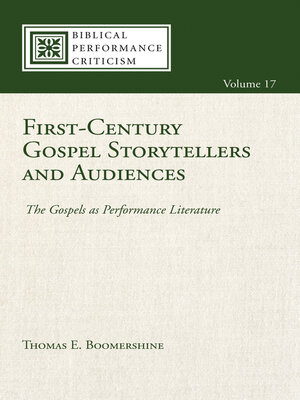First-Century Gospel Storytellers and Audiences
ebook ∣ The Gospels as Performance Literature · Biblical Performance Criticism
By Thomas E. Boomershine

Sign up to save your library
With an OverDrive account, you can save your favorite libraries for at-a-glance information about availability. Find out more about OverDrive accounts.
Find this title in Libby, the library reading app by OverDrive.



Search for a digital library with this title
Title found at these libraries:
| Library Name | Distance |
|---|---|
| Loading... |
These essays explore the reconception of the Gospels as first-century compositions of sound performed for audiences by storytellers rather than the anachronistic picture of a series of texts read by individual readers. The new paradigm implicit in these initial experiments is based on the recent realization that the majority of persons—85 to 95 percent—were illiterate and experienced the Jesus stories as members of audiences. Either from memory or from memorized manuscripts, the evangelists performed the Gospels as an evening's entertainment of two to four hours. The audiences were predominantly addressed as Hellenistic Judeans who lived in the aftermath of the Roman-Jewish war. When heard whole, the Gospels were vivid experiences of the central character of Jesus. These studies of audience address and the interactions between first-century storytellers and audiences reveal a dynamic performance literature that functioned as scripts for an ever-expanding network of storytelling proclamations whose envisioned horizon was the whole world. When the Gospels were told at one time from beginning to end, they invited the listeners to move from being peripherally interested or initially opposed to Jesus to identifying themselves as disciples of Jesus and believers in him as the Messiah.







